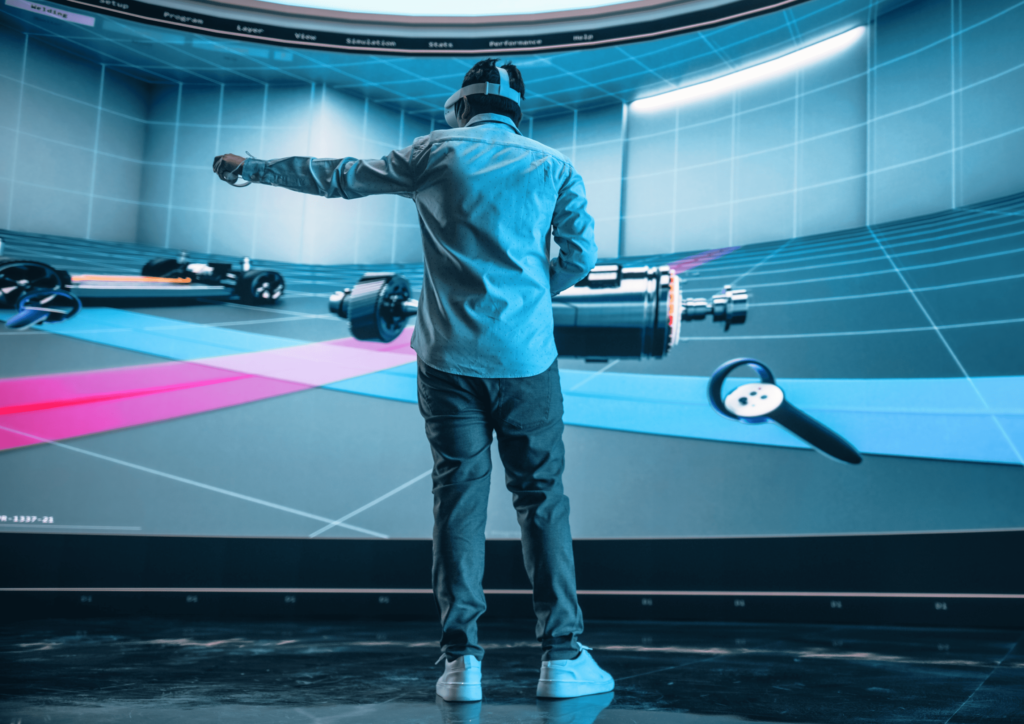
Virtual Reality’s Impact on the Automotive Industry.
The automotive industry, renowned for its constant pursuit of innovation, is currently embracing a groundbreaking change –Virtual Reality’s impact on the automotive industry would be very high. This transformative technology is revolutionizing how cars are designed, produced, and experienced. In this article, we’ll delve into the dynamic realm of Virtual Reality in the automotive industry and explore its profound impact.
Unlocking the Potential of Virtual Reality in the Automotive Industry
Virtual Reality is a technology that immerses users in computer-generated environments, offering an interactive and immersive experience. In the automotive sector, VR is driving several transformative changes, from design and manufacturing to sales and customer interactions.
Advantages of Virtual Reality in the Automotive Industry
-
- Design and Prototyping: Engineers and designers can create and test vehicle designs in virtual environments, resulting in cost-effective processes and quicker design iterations.
-
- Training and Simulation: VR is now employed for training assembly line workers and service technicians, providing a risk-free platform for learning and practicing complex procedures.
-
- Customer Engagement: Car showrooms are adopting VR to offer immersive test drives, allowing potential buyers to explore various models and configurations without the need for a physical vehicle.
-
- Product Customization: VR enhances the car-buying experience by enabling customers to customize their vehicles in a virtual showroom, selecting colors, features, and configurations that suit their preferences.
-
- Safety and Autonomous Driving Testing: Automakers are utilizing VR to simulate and test autonomous driving scenarios, ensuring the safety and efficiency of self-driving vehicles.
Applications of Virtual Reality in the Automotive Industry
-
- Design and Visualization: Engineers and designers utilize VR to create and visualize 3D car designs, facilitating the assessment of aerodynamics, ergonomics, and aesthetics.
-
- Training and Skill Development: Assembly line workers and service technicians use VR for training, allowing them to practice intricate procedures and repairs in a risk-free setting.
-
- Virtual Showrooms: Car dealerships employ VR to provide virtual test drives and showroom experiences, enabling customers to interact with different models and features before making a decision.
-
- Product Customization: VR showrooms allow customers to personalize their vehicles by adjusting features, colors, and configurations to meet their specific preferences.
-
- Safety Testing: VR is instrumental in testing the safety of autonomous vehicles by simulating various road scenarios and validating the effectiveness of self-driving systems.
Conclusion
Virtual Reality is steering the automotive industry into a new era of innovation and efficiency. As technology continues to advance, the potential applications of VR in the automotive sector are boundless. Whether you’re an automotive engineer shaping the vehicles of the future, a dealership aiming to elevate the customer experience, or a driver eager to explore the latest models, Virtual Reality is reshaping the way we approach automobiles. Embrace this technological revolution and journey into a future where cars are designed, manufactured, and experienced like never before. The automotive industry is headed toward an even more exciting and immersive future, and Virtual Reality is at the wheel, driving innovation and change.


